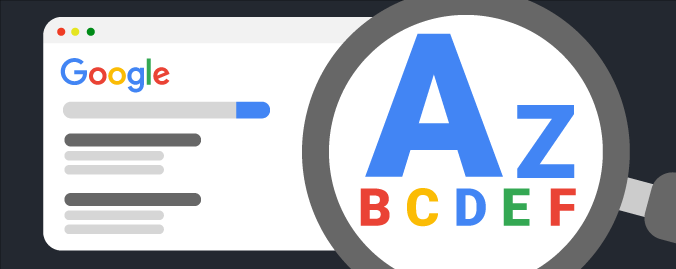Don’t know your backlinks from your snippets? Search Engine Optimisation is an important part of your small business marketing, but many SEO companies smother what they do in jargon to bamboozle their clients.
At Redline Digital, we believe in keeping you in the loop rather than the dark. We want you to have the knowledge you make the best digital marketing decisions for your small or medium business.
Get the lowdown on some practical SEO terms with this handy A-Z glossary.
Algorithm
Google and other search engines use complex computer programs called algorithms to decide how high up your web page will appear in the results someone makes a search (this is a known as page rank). These algorithms are constantly changing, so it’s important to stay ahead of the curve.
Backlink
Backlinks are links from other web pages to your website. They’re one of the biggest factors that Google uses to determine your page ranking – especially when they come from trusted, high-traffic sites.
Conversion
When your customer or client does something on your website you want them to – whether its making a purchase, subscribing to an email list or contacting you.
Duplicate Content
Using the same content in multiple places on your website. It might seem like a shortcut now, but duplicate content frustrates readers and is penalised by the all-powerful algorithm.
Error 404
This error message tells users that a page can’t be found because it’s been moved or deleted. Dead ends like this don’t directly bring down your website’s rank, but they’re definitely not a good look.
Freshness
Google usually prioritises websites with new, updated and trending content. But there’s no golden rule – sometimes a website being well established can be evidence that it’s trustworthy.
Googlebot
Search engines don’t actually search the Internet itself – they search a huge index of websites that they’ve previously stored. Googlebots (also known as ‘spiders’) are programs designed to constantly ‘crawl’ the web for information to keep Google’s index up to date.
HTML tags
Hyper Text Markup Language tags are simple pieces of code that help let spiders know which words on your page are important. They include title tags, header tags, and meta-descriptions.
Internal Linking
Creating hyperlinks between different pages of your own site. This can boost your rank by signalling how those pages are relevant to one another.
Javascript
A programming language that allows you to include dynamic and interactive components in a website.
Keyword
Words and phrases that users search for are the words that you should include in your pages where appropriate.
Link building
Getting backlinks by reaching out to other websites and through public relations.
Meta Description
The HTML summary of your web page that appears on Google and can help increase click-throughs.
Nofollow
An instruction to search engines to ignore a particular link on your page when determining page rank.
On-page SEO
SEO activities you perform on your website itself, in contrast to off-page SEO, like link-building and external marketing.
Penalties
Google periodically bumps down the rankings of websites that are trying to cheat the system, and can even make pages invisible to searches. It’s important to steer clear of dodgy SEO ‘silver bullets’ and never compromise your content.
Queries
The exact phrases people search for to find particular information. You can find the most common queries on Google Analytics and tweak your content accordingly.
Roundup
A blog post that curates the best content on a particular topic. This can be excellent for link building.
Snippet
A snippet is the result Google shows a user. A rich snippet is one that includes extra information, like an image.
Term Frequency
One of the metrics that determines page rank is the number of times a search term appears on a page. Don’t go overboard though – Google will know!
UX
User Experience, or UX, refers to the usability, helpfulness and practical elegance of your website. Better UX leads to more customer loyalty and conversions, which in turn will improve your traffic and SEO.
Viral Content
Blog posts, articles, videos and infographics that spread rapidly through the Internet. Though fantastic for your small business marketing, viral content is very difficult to generate or predict.
White Hat SEO
SEO that adheres to Google’s guidelines and follows SEO best practices. In contrasts to Black Hat SEO, which seeks to manipulate search engines with banned or unethical techniques; and Grey Hat SEO, which is somewhere in between.
XML Sitemap
A directory of your website that helps search engine spiders navigate your page in the way that you want them too.
Yahoo and Bing!
Although around two-thirds of Internet searches are done on Google, it’s important to remember that Google doesn’t have a monopoly and that other search engines exist, each with a directory of their own.
Zeal
OK, we cheated for Z – but the best way to ensure your SEO strategy is on track is to be empowered by a team of digital marketing experts with the passion to help you be ahead of the curve. Get in touch with Redline Digital today to find out more.
